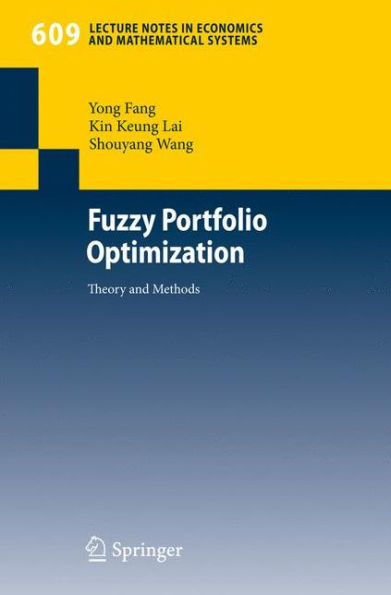Fuzzy Portfolio Optimization: Theory and Methods
Most of the existing portfolio selection models are based on the probability theory. Though they often deal with the uncertainty via probabilistic - proaches, we have to mention that the probabilistic approaches only partly capture the reality. Some other techniques have also been applied to handle the uncertainty of the financial markets, for instance, the fuzzy set theory [Zadeh (1965)]. In reality, many events with fuzziness are characterized by probabilistic approaches, although they are not random events. The fuzzy set theory has been widely used to solve many practical problems, including financial risk management. By using fuzzy mathematical approaches, quan- tative analysis, qualitative analysis, the experts’ knowledge and the investors’ subjective opinions can be better integrated into a portfolio selection model. The contents of this book mainly comprise of the authors’ research results for fuzzy portfolio selection problems in recent years. In addition, in the book, the authors will also introduce some other important progress in the field of fuzzy portfolio optimization. Some fundamental issues and problems of po- folio selection have been studied systematically and extensively by the authors to apply fuzzy systems theory and optimization methods. A new framework for investment analysis is presented in this book. A series of portfolio sel- tion models are given and some of them might be more efficient for practical applications. Some application examples are given to illustrate these models by using real data from the Chinese securities markets.
1111356296
Fuzzy Portfolio Optimization: Theory and Methods
Most of the existing portfolio selection models are based on the probability theory. Though they often deal with the uncertainty via probabilistic - proaches, we have to mention that the probabilistic approaches only partly capture the reality. Some other techniques have also been applied to handle the uncertainty of the financial markets, for instance, the fuzzy set theory [Zadeh (1965)]. In reality, many events with fuzziness are characterized by probabilistic approaches, although they are not random events. The fuzzy set theory has been widely used to solve many practical problems, including financial risk management. By using fuzzy mathematical approaches, quan- tative analysis, qualitative analysis, the experts’ knowledge and the investors’ subjective opinions can be better integrated into a portfolio selection model. The contents of this book mainly comprise of the authors’ research results for fuzzy portfolio selection problems in recent years. In addition, in the book, the authors will also introduce some other important progress in the field of fuzzy portfolio optimization. Some fundamental issues and problems of po- folio selection have been studied systematically and extensively by the authors to apply fuzzy systems theory and optimization methods. A new framework for investment analysis is presented in this book. A series of portfolio sel- tion models are given and some of them might be more efficient for practical applications. Some application examples are given to illustrate these models by using real data from the Chinese securities markets.
54.99
In Stock
5
1

Fuzzy Portfolio Optimization: Theory and Methods
176
Fuzzy Portfolio Optimization: Theory and Methods
176Paperback(2008)
$54.99
54.99
In Stock

Product Details
| ISBN-13: | 9783540779254 |
|---|---|
| Publisher: | Springer Berlin Heidelberg |
| Publication date: | 05/05/2008 |
| Series: | Lecture Notes in Economics and Mathematical Systems , #609 |
| Edition description: | 2008 |
| Pages: | 176 |
| Product dimensions: | 6.00(w) x 9.20(h) x 0.50(d) |
From the B&N Reads Blog
